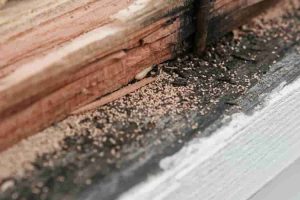As the temperature drops and the nights grow longer, many of us are preparing our homes for the coziness of winter. Yet, along with the chill comes the increased risk of rodents seeking warmth and shelter within our walls. It’s crucial we take proactive steps to fortify our homes against these unwelcomed guests. By understanding the habits of rodents and the attractions our homes present, we can effectively implement winter rodent control measures.
Rodents like rats and mice are not just inconvenient; they can pose significant health and safety hazards. They can carry diseases, contaminate food, and even cause fire risks by gnawing on electrical cables. This is why it’s important for us to secure our homes from these pests as part of our winter preparations. A combination of cleanliness, vigilance, and strategic deterrents can make all the difference in keeping our homes rodent-free during the cold months.
Our strategy must be comprehensive, attending not only to potential entry points but also reducing the allure of our homes to these creatures. This includes decluttering areas like attics and garages where rodents might hide, ensuring our yards do not offer easy sustenance with fallen fruit or waste, and maintaining a tidy living space to deter nesting. By adopting these practices, we prepare our homes not just for the bliss of winter warmth, but also to stand strong against rodent invasions.
Understanding Rodent Behavior in Winter
As winter months approach, we observe noticeable changes in rodent behavior, especially in rats and mice, who intensify their search for shelter and warmth. Recognizing these patterns is vital to effectively fortify our homes against infestations.
Identifying Common Winter Rodents
In winter, the most common unwelcome guests in our homes are Norway rats and house mice. These rodents are known for their ability to survive in colder climates by seeking refuge in our warm, cozy homes. Norway rats tend to burrow and prefer lower levels like basements, whereas house mice favor warm and hidden areas, such as attics.
Why Rodents Seek Shelter in Homes During Winter
During the colder months, rodents seek shelter in homes primarily for two reasons: warmth and food. Our homes offer an ideal environment with plenty of resources. Additionally, the decrease in outdoor temperature causes rodents to search for insulated areas to maintain their body heat. By understanding these motivations, we can better anticipate and hinder their entry into our homes.
Home Inspection and Identification of Entry Points
To effectively protect our homes from rodents during the winter, we must conduct thorough inspections focusing on potential entry points. Identifying and sealing these access points are essential first steps in pest-proofing our home.
Surveying the Exterior for Access Routes
When inspecting the exterior of our home, we systematically examine for any small cracks, holes, and gaps that may serve as gateways for pests.
- Doors and Windows: Ensure all weather stripping is intact and there are no gaps. If we find any, we replace the stripping or use caulk to seal the openings.
- Vents: Check all vents, including those for the dryer, attic, and crawl spaces. We make sure these are covered with a fine mesh to prevent rodents from slipping through.
- Garage: The seals around the garage door must be tight and without any tears or breaks.
It’s not uncommon for these pests to squeeze through spaces as small as a dime, so our vigilance is key.
Checking the Interior for Signs of Rodent Presence
Within our home, any evidence of rodent activity must be taken seriously. We start by looking for droppings, especially in less trafficked areas such as basements and attics.
- Droppings: Finding droppings is a sure sign of rodent presence. We take note of their locations as this points us toward potential nesting sites and entry points.
- Sounds and Smells: Scratching noises or a musky odor can indicate an active infestation.
- Damage: Gnaw marks on food packaging or furnishings also suggest that rodents have made their way into our home.
By addressing these signs immediately and identifying the entry points, we can take steps to remove the pests and prevent future invasions.
Preventative Measures to Deter Rodent Infestations
Before the chill of winter sets in, it’s crucial that we take proactive steps to prevent rodents from seeking shelter in our homes. These creatures are not only a nuisance but can pose significant health risks. Let’s explore how to effectively safeguard our homes.
Sealing and Caulking Potential Entry Points
Firstly, we must thoroughly inspect our homes for any cracks and openings that may invite rodents inside. Sealing and caulking these potential entry points are essential, as rodents can squeeze through gaps as small as a quarter of an inch. We’ll need to apply caulk to seal gaps around windows and doors and install weather stripping to ensure a tight seal. Utilizing steel wool or metal sheeting can effectively block larger openings, particularly in areas where rodents are likely to chew through softer materials.
- Checklist for Sealing:
- Inspect all indoor and outdoor walls for cracks.
- Install weather stripping around doors and windows.
- Use caulk to seal smaller gaps and openings.
- Apply steel wool or metal barriers to cover larger breaches.
Proper Food Storage and Waste Management
Next, we must focus on food storage and waste management. Rodents are attracted to food sources, so it’s important to store food in airtight containers and dispose of waste properly. We should regularly clean areas where food is prepared to prevent crumbs and grease buildup, which can entice rodents. It’s equally significant to ensure that indoor and outdoor trash bins have tightly fitting lids to deter these pests.
- Food Storage Guidelines:
- Use airtight containers for pantry items.
- Keep countertops and food preparation areas clean.
- Seal garbage bags and use bins with secure lids.
Landscaping and Outdoor Maintenance
Lastly, we turn our attention to the area directly surrounding our homes. Landscaping and outdoor maintenance play a vital role in preventing rodent infestations. We must regularly remove debris such as leaves and firewood, which provide perfect nesting sites for rodents. Additionally, keep gutters clear to avoid water accumulation that may attract these pests. Trim back any tree branches or shrubbery that come close to our house to eliminate potential access points.
- Outdoor Maintenance Checklist:
- Remove debris and regularly rake leaves.
- Store firewood at least 20 feet away from the house.
- Ensure that gutters are not clogged with leaves or other material.
- Trim vegetation away from the house to reduce access points for rodents.
By following these specific measures, we can confidently reduce the risk of rodent infestations and keep our homes safer and more comfortable throughout the cold months.
Additional Tips for Maintaining a Rodent-Free Home
In our approach to a rodent-free home during the cold months, we focus on diligence and expertise. Regular maintenance routines and recognizing the need for professional help are the cornerstones of ensuring our homes remain safe and secure.
Regular Home Maintenance Routines
Seals and Gaps:
- Inspect: We routinely check for cracks or holes in the foundation, walls, and vents. Rodents can enter through spaces as small as a dime.
- Repair: We use caulk and steel wool for a quick fix, and consider professional repairs for larger breaches.
Clutter and Cleanliness:
- Declutter: We keep our storage areas orderly, reducing hiding spots for rodents.
- Clean: We consistently dispose of garbage and store food in sealed containers.
Understanding When to Seek Professional Help
Signs of Infestation:
- If we find rodent droppings or hear noises within walls, it’s time to consider professional pest control solutions.
Safety First:
- We prioritize our family’s safety by seeking pest control experts who use safe and humane methods when DIY solutions are no longer effective.
On-Time Service

5 STAR SERVICE BASED ON 100+ GOOGLE REVIEWS
PET & FAMILY FRIENDLY TREATMENT

ALL YEAR-ROUND PROTECTION
Take Back Control Now
8
REASON TO CHOOSE SAFE PEST CONTROL
- Guarantee protection all year-round
- 30 Years Collective Experience
- An impeccable reputation across Sydney's Suburbs
- Certified treatments & written Warranty On all work carried out
- Family Owned & Operated
- Rated #1 Pest Control In Sydney NSW
- No Mess, No Smell
- Family & Pet Friendly Treatments
REQUEST A QUOTE








